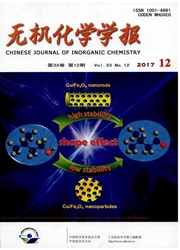

 中文摘要:
中文摘要:
通过在聚氨酯泡沫模板中沉积多壁碳纳米管,用炭的预制体酚醛树酯将碳纳米管粘接固定在一起。经过高温碳化过程制备了碳纳米管-炭复合泡沫材料。红外光谱结果表明利用浓硫酸和浓硝酸的混合溶液处理可以使复合泡沫表面活化形成羧基和羟基,从而使复合泡沫具备较强的分子吸附能力。扫描电镜和氮吸附实验表明这种复合泡沫同时具备大孔和介孔,大孔能够满足流体自由流动的通畅性,介孔可以满足中分子的吸附需要。对标定物维生素B12的吸附实验证明这种复合泡沫对中分子量的生化分子具有有效的吸附能力。这种宏观尺寸的泡沫材料与传统的颗粒状活性炭相比具有简化工艺,提高吸附效率的应用潜力。
 英文摘要:
英文摘要:
Multi-walled carbon nanotubes and phenol formaldehyde resin were precipitated into polyurethane foam. After carbonization at high temperature, multi-walled carbon nanotubes-carbon composite foam (CNTs-C foam) was obtained. FTIR spectra confirms that the surface of CNTs-C foam can be grafted with carboxyl and hydroxyl groups after being activated with mixture of sulfuric acid and nitric acid. These groups can improve adsorption ability of CNTs-C foam. SEM and nitrogen adsorption/desorption results show that there are both macropores and mesopores in CNTs-C foam. Macropores can facilitate free flow of solution in composite foam, and mesopores can adsorb giant molecules. This CNTs-C foam could effectively adsorb Vitamin B12(VBt2). Compared with traditional activated carbon particles, this composite foam in macro-scale has great potential as a new adsorbent for simplified process and effective adsorption of biomolecules.
 同期刊论文项目
同期刊论文项目
 同项目期刊论文
同项目期刊论文
 期刊信息
期刊信息
